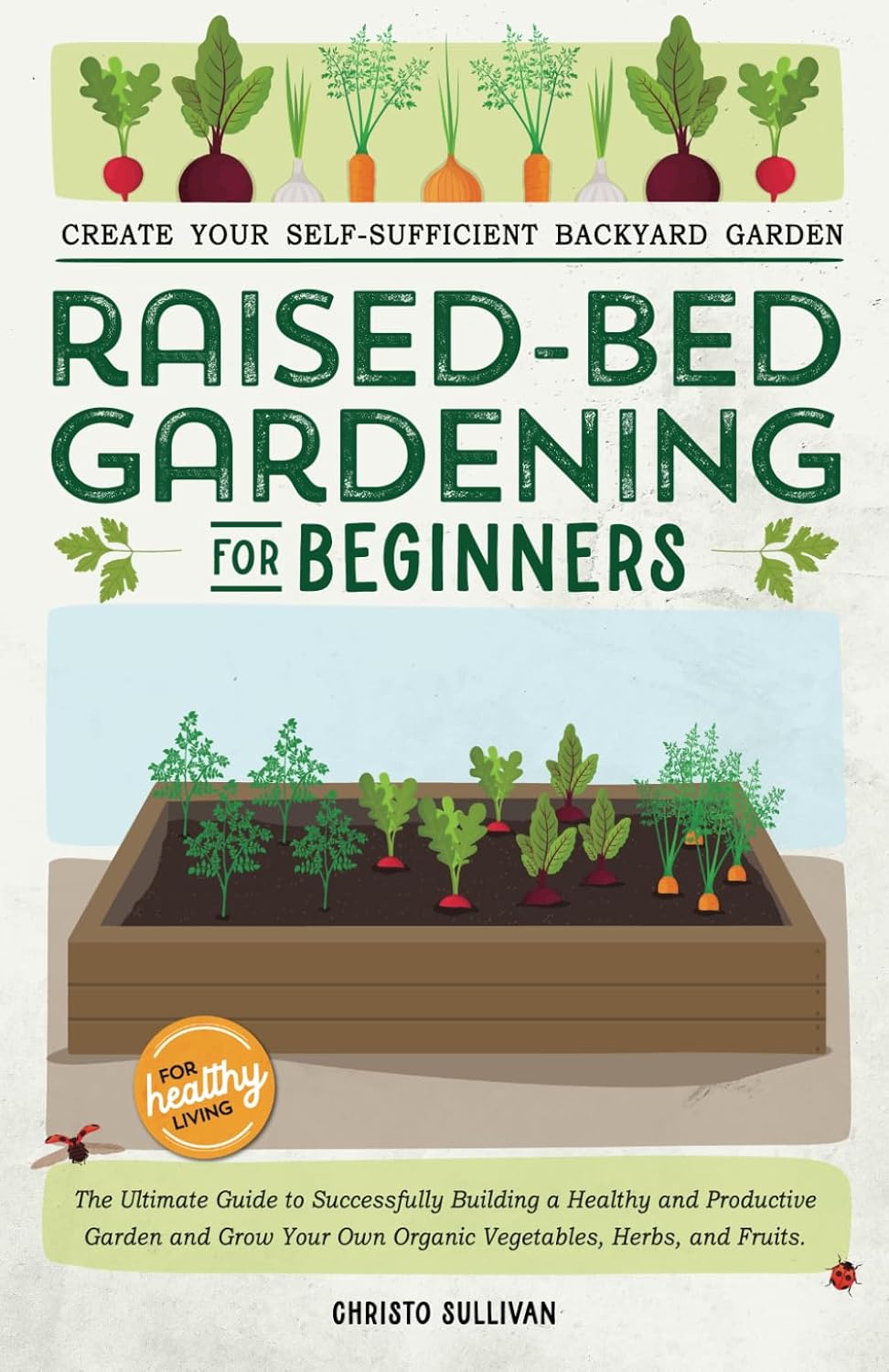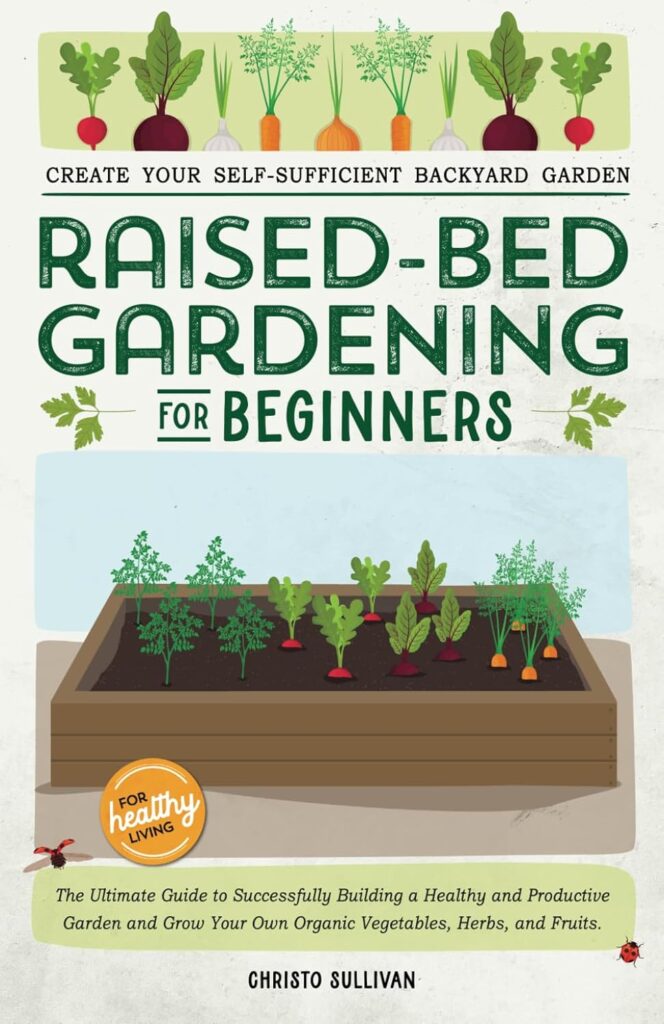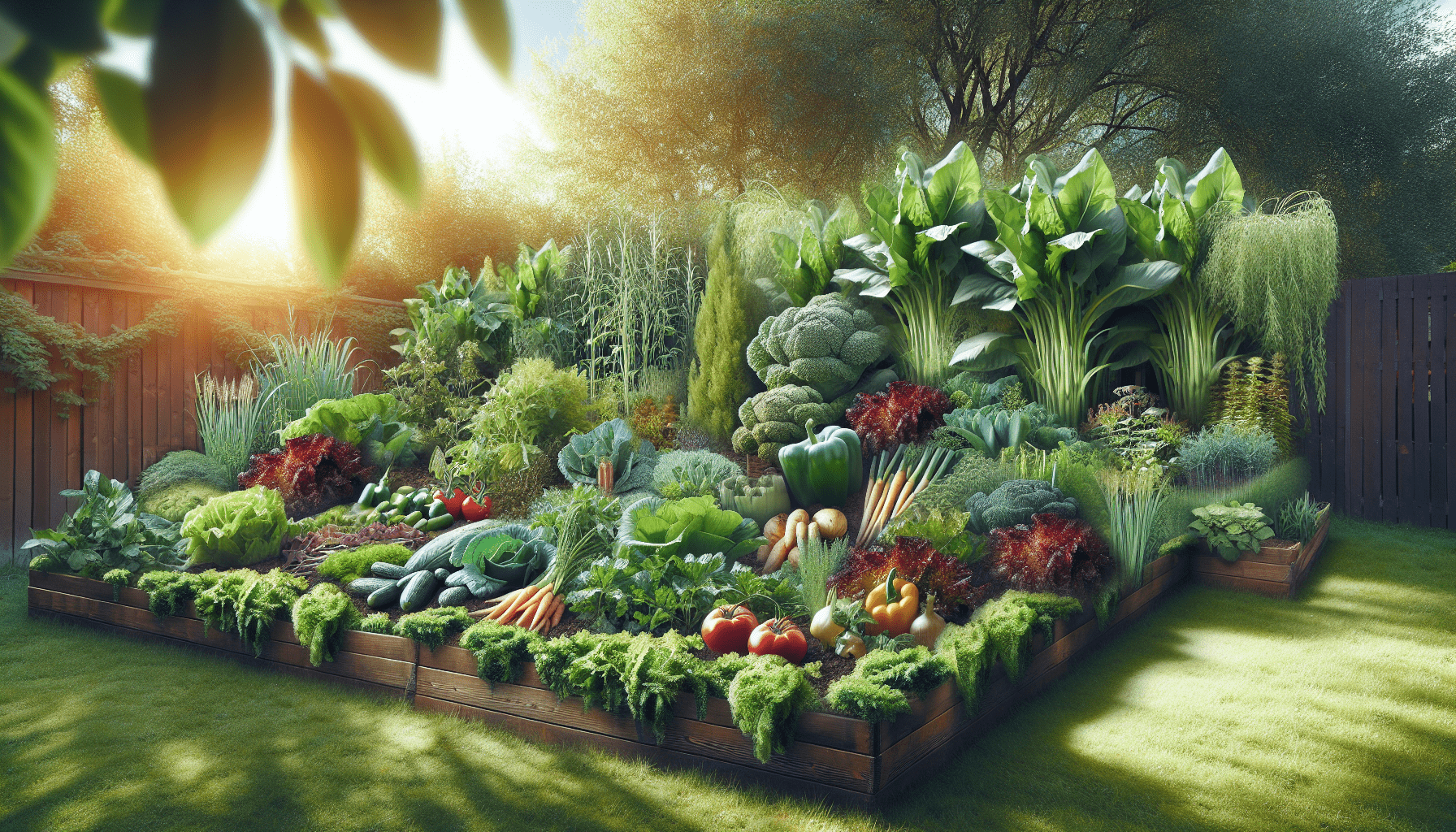Have you ever dreamed of having your own beautiful garden full of fresh organic vegetables, herbs, and fruits? If so, the “Raised Bed Gardening for Beginners: The Ultimate Guide to Successfully Building a Healthy and Productive Garden, and Growing Your Own Organic Vegetables, Herbs, and Fruits” paperback is the perfect resource for you. Let’s dive into the comprehensive guide to see how it can help you achieve your gardening goals.
Introduction to Raised Bed Gardening
Raised bed gardening is a popular method that involves planting in soil that is elevated above the ground, contained with a border. This method offers many benefits over traditional in-ground gardening, such as better soil drainage, improved pest control, and higher yields. With this ultimate guide, you will learn everything you need to know to get started on your own raised bed garden.
Why Choose Raised Bed Gardening?
If you’re new to gardening or looking for a more manageable way to grow your own produce, raised bed gardening is an excellent option. Raised beds allow you to control the quality of your soil, reduce the risk of soil compaction, and create a more organized and visually appealing garden space. Whether you have limited space, poor soil quality, or physical limitations, raised bed gardening can be tailored to fit your needs.
Getting Started: Planning Your Garden
Before you start building your raised bed garden, it’s essential to plan out the layout and design to ensure a successful harvest. In this section, we will discuss the key steps to take when planning your garden to maximize its productivity and efficiency.
Choosing the Right Location
Selecting the right location for your raised bed garden is crucial to its success. Look for a spot that receives at least 6-8 hours of sunlight per day, is easily accessible for watering and maintenance, and is away from any competing tree roots. Consider the overall aesthetics of your garden space and how it will complement your existing landscape.
Determining the Size and Shape
When deciding on the size and shape of your raised beds, think about your available space, the type of plants you want to grow, and your accessibility needs. Rectangular or square beds are the most common shapes, but you can get creative with circular or custom-designed shapes. Keep in mind that you should be able to reach the center of the bed without stepping into it, so limit the width to about 4 feet.
Building Your Raised Beds
Once you have planned out the location, size, and shape of your garden beds, it’s time to start building. You can use a variety of materials such as wood, concrete blocks, or recycled plastic to construct your raised beds. Make sure to use untreated or naturally rot-resistant materials to avoid any chemical leaching into your soil. Consider adding a layer of landscape fabric at the bottom of the bed to prevent weeds from growing up into the soil.
Soil Preparation and Fertilization
The quality of your soil is essential to the success of your raised bed garden. In this section, we will discuss the importance of soil preparation and how to properly fertilize your garden beds to ensure optimal plant growth and productivity.
Testing Your Soil
Before planting, it’s a good idea to test your soil to determine its pH level and nutrient content. You can purchase a soil testing kit or send a sample to a local extension office for analysis. Based on the test results, you can adjust your soil composition by adding amendments such as compost, peat moss, or aged manure to improve its fertility.
Improving Soil Drainage
Raised bed gardens are known for their excellent drainage, but it’s still essential to ensure that water flows through the soil efficiently. You can enhance drainage by incorporating coarse materials like perlite or vermiculite into your soil mix. Avoid using heavy clay soils that tend to compact and retain water, leading to root rot and other plant diseases.
Fertilizing Your Garden Beds
To supply essential nutrients to your plants, you will need to fertilize your raised bed garden regularly. Choose an organic fertilizer that is suitable for the types of plants you are growing, such as a balanced compost or aged manure. Apply the fertilizer according to the manufacturer’s instructions, and be sure to monitor your plants for any signs of nutrient deficiencies.
Selecting Plants for Your Raised Bed Garden
Choosing the right plants for your raised bed garden is crucial to its success. In this section, we will discuss the best vegetables, herbs, and fruits to grow in your garden beds and how to plan out your planting schedule for a bountiful harvest.
Selecting Vegetables
When selecting vegetables for your raised bed garden, consider planting a variety of crops that complement each other and can be rotated seasonally. Choose vegetables that thrive in your climate and soil conditions, such as tomatoes, peppers, lettuce, carrots, and radishes. Pay attention to spacing requirements and plant compatibility to maximize your garden’s productivity.
Growing Herbs
Herbs are a great addition to any raised bed garden, as they provide culinary flavor, pest control, and visual interest. Consider planting a mix of annual and perennial herbs such as basil, oregano, thyme, and rosemary. Herbs can be interplanted with vegetables to help deter pests and improve overall garden health.
Adding Fruit Trees and Bushes
If you have space in your raised bed garden, consider planting fruit trees and bushes to enjoy a variety of fresh fruits throughout the growing season. Apples, peaches, strawberries, and blueberries are popular fruit choices that can thrive in a well-drained and sunny garden bed. Make sure to prune your fruit trees regularly to promote healthy growth and maximize fruit production.
Maintaining Your Garden Through the Seasons
Once your raised bed garden is established, it’s essential to maintain it through all the seasons to ensure a healthy and productive harvest. In this section, we will discuss the key tasks you need to perform during each season to keep your garden thriving.
Spring
In the spring, your garden will come alive with new growth and vibrant colors. Start by planting cool-season crops like lettuce, spinach, and peas, and transplant any seedlings you started indoors. Monitor your garden for signs of pests and diseases, and apply organic pest control methods as needed. Mulch around your plants to retain moisture and suppress weeds, and water regularly to keep the soil evenly moist.
Summer
Summer is the peak growing season for most garden crops, so be prepared for rapid growth and abundant harvests. Continue to monitor your plants for pests and diseases, and be vigilant about watering during hot and dry weather. Harvest your vegetables, herbs, and fruits as they ripen, and remove any weeds or dead plant material to maintain a tidy and healthy garden space.
Fall
As the weather cools down in the fall, it’s time to start preparing your garden for the winter months. Harvest any remaining vegetables and herbs, and store or preserve them for later use. Plant cover crops like winter rye or clover to protect your soil from erosion and add nutrients for next season. Clean up your garden beds, and consider adding a layer of mulch to insulate your plants from freezing temperatures.
Winter
During the winter, your garden will be dormant, but there are still tasks you can perform to prepare for the upcoming growing season. Check your raised beds for drainage issues or soil compaction, and make any necessary repairs. Plan out your garden layout for the next season, and order seeds or seedlings for early spring planting. Take this time to relax and recharge, knowing that your garden will soon spring back to life.
Conclusion
In conclusion, the “Raised Bed Gardening for Beginners: The Ultimate Guide to Successfully Building a Healthy and Productive Garden, and Growing Your Own Organic Vegetables, Herbs, and Fruits” paperback is a valuable resource for anyone looking to start their own garden journey. From planning and building your raised beds to selecting plants and maintaining your garden through the seasons, this guide covers all the essential information you need to succeed. With the right tools, knowledge, and a little bit of patience, you can enjoy the satisfaction of growing your own fresh and delicious produce right at home. Get your copy today and begin your gardening adventure!
Disclosure: As an Amazon Associate, I earn from qualifying purchases.






0 responses to “Raised Bed Gardening Book Review”